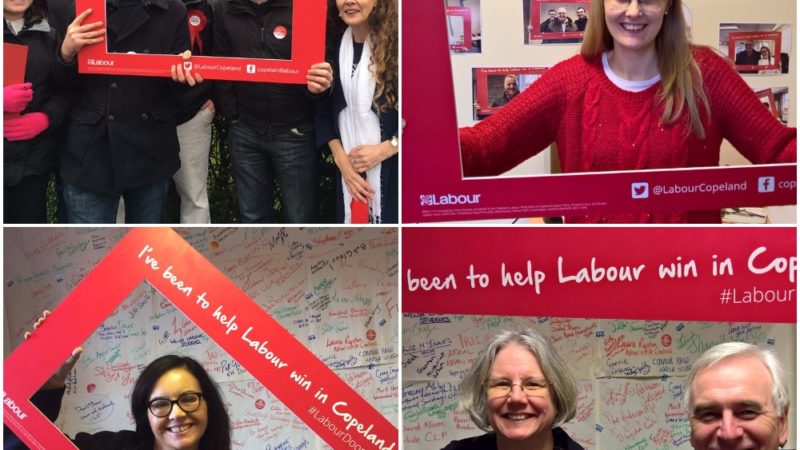

It was interesting to see the pictures on LabourList of Wes Streeting and his friends in Copeland campaigning but I hope the selfies with a cardboard red square are not going to be the main social media message of this campaign. There is a danger that it comes across to voters as self-congratulatory or even flippant.
In all election campaigns, the main purpose of social media is to communicate the candidate’s values, and highlight issues in the constituency that the candidate would attend to, if elected. With Gillian Troughton – a St John ambulance driver and former hospital doctor – as candidate, this should be a doddle.
Photos of massed campaigners may well intimidate the hell out of the Tories, but they are not who we need to speak to, if we want to win. Voters expect links to articles, discussions on policy, arguments between candidates, and reasons to vote Labour.
By all means, show the senior Labour figures such as Tom Watson and Jon Ashworth in Copeland, as it demonstrates the party is committed but, as a London MP, Streeting is unlikely to be known to these voters. So let’s thank him for his help personally but concentrate the Twitter feed on shadow cabinet ministers or prominent locals.
The golden rule of social media is that if you have just one chance to be heard, then say something interesting. Photos of campaigners having fun may encourage activists to get involved, but the problem is that Twitter goes out to the whole world, not just to the local party. Too many selfies of activists will not cause voters to return again to the social media feed.
At a recent council by-election, in Tower Hamlets in East London, we had a fantastic candidate and a huge number of people out campaigning, but each campaign session began with photos.
Each day there were dozens of tweets of selfies dominating the campaign account, and the accounts of all the influential local councillors, but in each polling district of that ward, there was an micro-issue that needed to be dealt with: in one area a broken bus stop. In another, some dead shrubs. In another, rusting bicycles that had been chained to a railing months before, but abandoned after a wheel was stolen. There were no Twitter photos of the candidate promising to fix these micro issues.
In the end, our candidate increased the voter ID from 15 per cent to a strong 50 per cent, but lost to an independent. The white middle class didn’t come out to vote in sufficient number. If we had posted pictures of those micro-issues on the candidate’s Twitter feed, they would at least have known that the candidate was interested in the area, rather than wrongly presuming her to be interested in selfies with her Labour mates.
Let’s not make the same mistake again. We have a terrific local candidate in Copeland, with a great personal story and an expertise in health care. She is a gift. Let’s make sure the social media aspect of the campaign does justice to the quality of the candidate.




More from LabourList
Mainstream announce recommendations for NEC candidates
‘Africa must be the UK’s top foreign policy priority in 2026’
‘Standing up to power is not optional when politically uncomfortable. It’s essential’